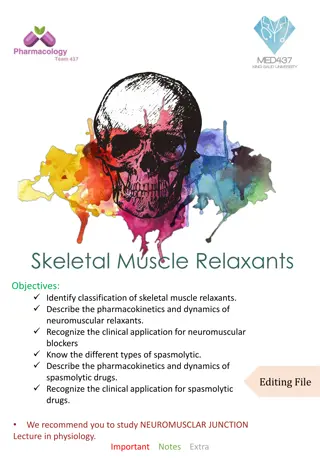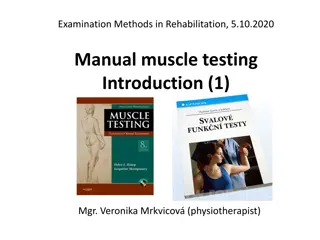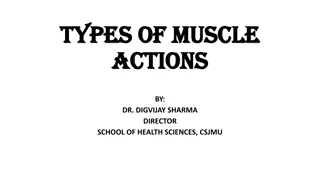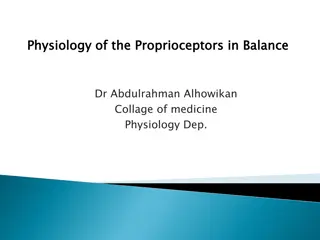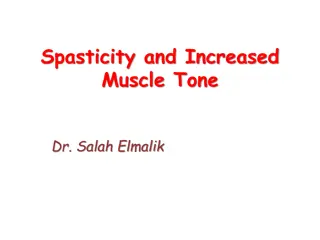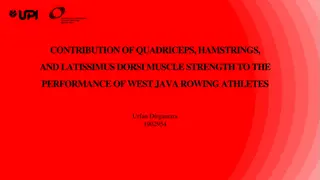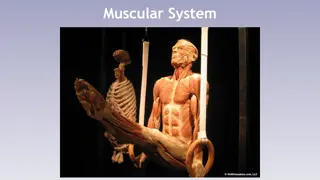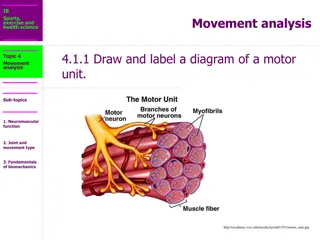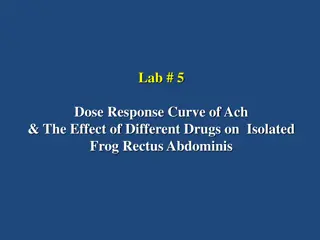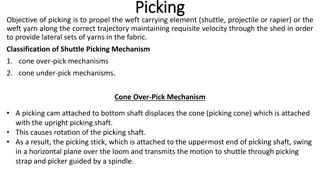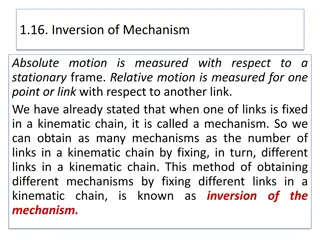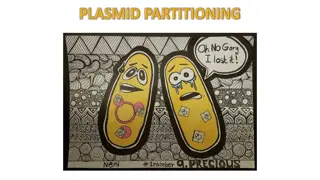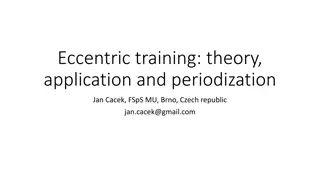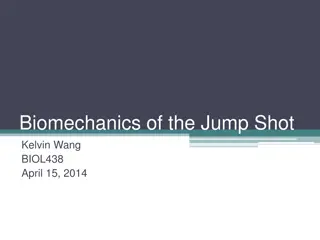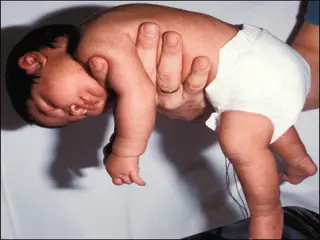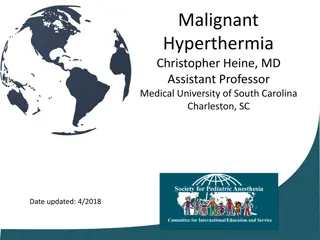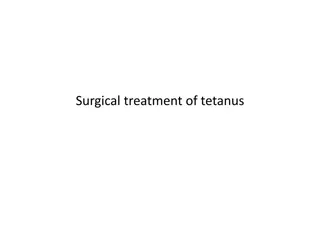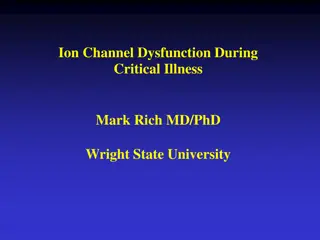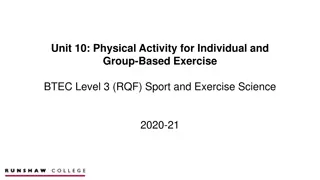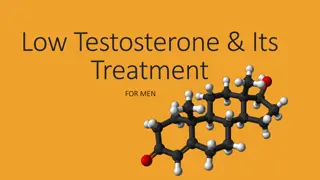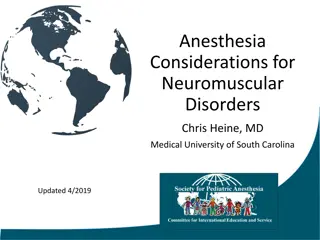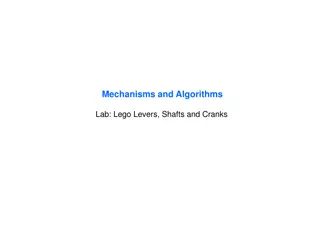Understanding Muscle Relaxants: Mechanisms and Applications
Muscle relaxants play a crucial role in managing conditions like spasticity and painful spasms. Centrally active agents modulate motor impulses in the spinal cord and CNS, while peripherally active agents target neuromuscular junctions. Baclofen, benzodiazepines, and other specific drugs serve various purposes in different conditions. By enhancing GABAergic transmission, these medications provide relief from muscle tension and spasms in patients with conditions such as multiple sclerosis and cerebral palsy.
- Muscle Relaxants
- Mechanism of Action
- Spasticity Management
- Neuromuscular Junctions
- GABAergic Transmission
Download Presentation

Please find below an Image/Link to download the presentation.
The content on the website is provided AS IS for your information and personal use only. It may not be sold, licensed, or shared on other websites without obtaining consent from the author. Download presentation by click this link. If you encounter any issues during the download, it is possible that the publisher has removed the file from their server.
E N D
Presentation Transcript
Overview of Muscle Relaxants Mechanism of action Centrally active Peripherally active Baclofen Benzodiazepines: Tetrazepam Diazepam Clonazepam Thiocolchicoside Mephenoxalone Tizanidine Guaifenesin Orphenadrine Presynaptically active: botulinum toxin Postsynaptically active: Depolarizing blocking agents (suxamethonium) Non-depolarizing blocking agents (atracurium, vecuronium, pancuronium etc.)
Centrally Active Agents Attenuate transmission of motoric impulses in spinal cord and CNS Decrease muscle tone, do not influence intentional contractions weaker muscle relaxant activity AE: depression of CNS sedation, somnolence, confusion Acute and chronic painful spasms p.o., parenterally Spastic rheumatism Damage of n. ischiadicus (spasms of deep paravertebral muscles, compressions in intervertebral space etc.) Spastic disorders associated with cerebral palsy, multiple sclerosis, injuries of brain or spine
Centrally Active Agents Mechanism of action: Increase effects of inhibitory neurotransmitter -aminobutyric acid (GABA) in CNS and spine cord Baclofen Attenuates the activation of motor neurons in the spine cord GABABreceptor agonist Multiple sclerosis, cerebral palsy, injuries of brain and spinal cord
Centrally Active Agents MoA: Enhance of GABAergic transmission GABAAreceptors Baclofen Benzodiazepines: Tetrazepam Diazepam Clonazepam Thiocolchicoside Mephenoxalone Tizanidine Guaifenesin Orphenadrine Psychiatric medication with 5 effects: Anxiolytic Hypnotic Muscle relaxant Anticonvulsant Amnestic Low doses have expectorant effect, Higher doses have muscle relaxant and anxiolytic effect
Overview of Muscle Relaxants Mechanism of action Centrally active Peripherally active Baclofen Benzodiazepines: Tetrazepam Diazepam Clonazepam Thiocolchicoside Mephenoxalone Tizanidine Guaifenesin Orphenadrine Presynaptically active: botulinum toxin Postsynaptically active: Depolarizing blocking agents (suxamethonium) Non-depolarizing blocking agents (atracurium, vecuronium, pancuronium etc.)
Peripherally Active Agents 1.) Presynaptically active agents Decrease ACh release Botulinum toxin 2.) Postsynaptically active agents Act on nicotinic receptors (NM) Non-depolarizing Depolarizing
Non-depolarizing agents Firstly described in 15thcentury by european explorers in S. America Used by natives as arrow poisons Tubocurarine natural alkaloid Competitive NM receptors antagonists AE: release of histamine (bronchoconstriction, hypotension, syncope fainting) Progressive relaxation: eye muscles muscles of mastication neck and limbs trunk diaphragm Administered parenterally Effect weakens and is reversible competition of receptors
Non-depolarizing Agents With long effect (1-2 h): tubocurarine, pancuronium, pipecuronium, vecuronium With short efect (10-30 min): alcuronium, atracurium Surgery muscle relaxation in the operating field, or before mechanical ventilation (tracheal intubation) Ovedosing: antidote = acetylcholinesterase inhibitors (neostigmine, pyridostigmine )
Depolarizing Agents NM receptor agonists Open Na+ channels cause long-term depolarization resistancy to activation by ACh = depolarization blockade Remain on the receptor for a longer time, resistant to AChE Fasciculation (muscle twitches) muscle relaxation (paralysis) AE: cardiac arrhythmias, hyperkalemia, increase of intraocular pressure (IOP) + malignant hyperthermia !
Depolarizing Agents Decamethonium Suxamethonium (succinylcholine) Short-term muscle relaxation (3-5 min) Mechanical ventilation (tracheal intubation) Orthopedic manipulations repositiong of dislocated joint, fractures
Malignant Hyperthermia Rare AE of depolarizing MR and/or volatile general anesthetics Mechanisms: Defect of RYR receptor controls release of Ca2+ from sarcoplasmic reticulum Increase of Ca2+in myocyte uncontrolled increase of contractions, aerobic/anaerobic metabolism Symptoms: hyperthermia, cramps and rigidity, heart rate and breathing, cyanosis, lactate acidosis, rhabdomyolysis... 60 % of untreated cases are lethal (5 % of treated) Therapy: dantrolene, intensive cooling
Dantrolene Peripherally active muscle relaxant Blocks the release of Ca2+from sarcoplasmic reticulum by interaction with RYR Do not affect smooth muscle and myocardium Malignant hyperthermia Spastic disorders associated with spinal cord injury, stroke, cerebral palsy and multiple sclerosis Advantage: no CNS depression



